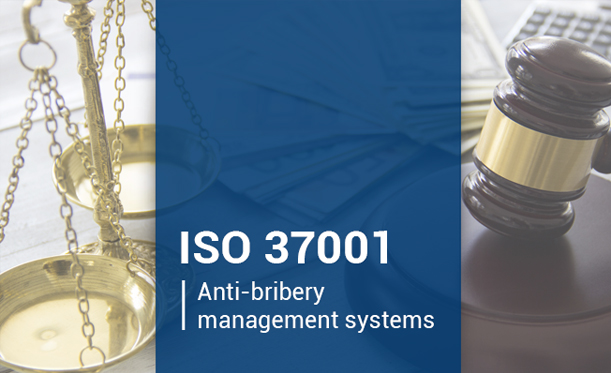ISO 37001:2016 specifies requirements and provides guidance for establishing, implementing, maintaining, reviewing and improving an anti-bribery management system.
The system can be stand-alone or can be integrated into an overall management system.
ISO 37001:2016 addresses the following in relation to the organization’s activities:

- Bribery in the public, private and not-for-profit sectors;
- Bribery by the organization;
- Bribery by the organization’s personnel acting on the organization’s behalf or for its benefit;
- Bribery by the organization’s business associates acting on the organization’s behalf or for its benefit;
- Bribery of the organization;
- Bribery of the organization’s personnel in relation to the organization’s activities;
- Bribery of the organization’s business associates in relation to the organization’s activities;
- Direct and indirect bribery (e.g. A bribe offered or accepted through or by a third party).
ISO 37001:2016 is applicable only to bribery.
It sets out requirements and provides guidance for a management system designed to help an organization to prevent, detect and respond to bribery and comply with anti-bribery laws and voluntary commitments applicable to its activities.
ISO 37001:2016 does not specifically address fraud, cartels and other anti-trust/competition offences, money-laundering or other activities related to corrupt practices, although an organization can choose to extend the scope of the management system to include such activities.
The requirements of ISO 37001:2016 are generic and are intended to be applicable to all organizations (or parts of an organization), regardless of type, size and nature of activity, and whether in the public, private or not-for-profit sectors.
Benefits of ISO 37001:2016
- Implementation of ISO 37001:2016 Anti-Bribery Management System will:
- Add a distinct level of credibility to the organisation’s management systems.
- Ensures that the organisation is implementing a viable anti-bribery management program utilising widely accepted controls and systems.
- Provides acceptable evidence to prosecutors or courts that the organisation has taken reasonable steps to prevent bribery and corruption.
- Provides assurance to management, investors, business associates, personnel and other stakeholders that the organisation is actively pursuing internationally recognised and accepted processes to prevent bribery and corruption.
- Protects the organisation, its assets, shareholders and directors from the effects of bribery.
